By Manish Puri
Bel y Cia opened in 1842 as a camiseria (shirt maker) on Passatge de Bacardí – a narrow walkway that connects Barcelona’s Las Rambla to Plaça Reial.
Following the demolition of the city walls (1854-1866) and the end of the Spanish Civil War (1939), Barcelona grew rapidly, and its locus changed. So, in the early 1940s, Bel y Cia took up new premises at the southern end of the grand shopping boulevard, Passeig de Gràcia, where it has remained ever since - a flag bearer for quality, luxury clothing surrounded by outlets of the Spanish fashion monolith, Inditex.
Over the years, the business has grown to become a full-wardrobe menswear retailer, and in 1989 a womenswear department opened in the same building. However, my recent visit to the shop was concentrated on the garment that has become synonymous with Bel over the past 80 years: the Teba.
Tales of the jacket’s origins vary, but it’s widely accepted that the first Teba was created as a shooting cardigan for King Alfonso XIII (above in Palma del Río in 1929).
Many believe the garment was commissioned on Savile Row at an unknown house – we know the King ordered suits from Henry Poole (since he was a boy of 10), Huntsman and Davies & Son.
There are, however, some that claim the jacket was the creation of María Sorreluz Múgica, a dressmaker from San Sebastián.
The King was a keen hunter and, at that time, the Count of Teba, Carlos Alfonso de Mitjans (nickname ‘Bunting’), was considered one of the finest shots in the world; naturally, the two aristocrats and bon vivants became good friends (both above on the right).
On a particular hunt, presumably after some envious glances and gentle enquiries (something I’m sure all PS readers can relate to when they’re out with a stylish friend), the King gifted his jacket to the Count - from whom it eventually took its name.
(Again, recollections differ here, and some insist it was the Count that offered his jacket to the King).
Some years later, in 1943, in an all too familiar scenario of menswear-enabling, Bunting (above in a signed photograph addressed to Bel y Cia) along with two sartorially minded friends - the Count of Caralt and Enrique Maier (a Wimbledon mixed-doubles champion in 1932) - decided to commission new Teba jackets. (I can virtually hear the glugging of vino tinto being poured and the crescendo in determination: “Shall we get some?”, “I think we should get some”, “I’ve ordered them, lads!”)
As the three gentlemen were existing customers of Bel y Cia, and therefore their measurements were already on file, they turned to the Barcelona shop, who proceeded to refine the jacket that has remained a classic to this day.
Unsurprisingly, given its hunting origins, many of the Teba’s characteristics are functional elements that suit a day spent roaming the estate.
Bel’s Classic Teba is fashioned from a knitted wool or wool/cashmere mix – a light, smooth and malleable fabric that follows the shooter’s form as they raise their arms to take aim – more so than a denser, stiffer weave like cotton or linen at any rate.
While the slightly relaxed and square silhouette helps further reduce any strain on the shooter's stance, it also allows the jacket to sit away from the body in warm weather and permits layering up on a cooler day.
Indeed, keeping the elements out is the key driver of the Teba’s style choices. The four buttons that run the length of the front of the jacket, the straight hems, the ventless back, and the button fastening on the cuffs all co-operate to shield its wearer from the wind and rain.
Even the Teba’s signature notch-less lapel (which I previously described as “a shawl collar sketched by a cubist”) can be buttoned to keep the neck covered on the Bel model. The lapel is also the area that has seen the biggest change from the traditional models sported in the 1930s and 1940s, having been slimmed down.
The finishing is akin to a shirt – shirt-sleeve shoulder, no padding, no canvas, no lining. What impressed me most was the roll of the lapels - which I don’t think is entirely obvious from Bel y Cia’s webstore images but is hopefully more apparent from the selfies above and the mannequin image at the end of this article.
I’ve tried other RTW Tebas and the lapels are often pressed flat above the top button, so the lapel line appears quite squashed relative to the long drop below. When I asked Xavier Cañadas (the shop’s manager for the past decade) how the Bel y Cia roll is achieved without any internal structure he proceeded to lead me toward the back of the shop.
Here in the centre of Barcelona, behind their retail space, spread across two floors, is where every Bel y Cia Teba and bespoke shirt is made. It’s an operation akin to a large bespoke house.
Under the watchful eye of the workshop head Ignasi (a textile engineer by training), the shirt cutter Ferran (who has been with the business for 30 years) and the Teba cutter Jordi (above) were busy preparing bundles to be stitched together by the team of tailors.
Each Teba (bespoke or RTW) is made and finished entirely by hand, save for the buttonholes which are machine finished – although Bel can hand sew them if requested.
In one corner, a lady armed with an industrial iron, suffused the garments with heat and steam to impart shape and animation – the critical step towards creating the lapel roll that caught my eye.
The workshop produces a range of RTW Tebas – the aforementioned classic knitted as well as similar alternatives made from cashmere, cashmere/silk, high twist wools, and suede.
They have also developed a more sartorial Teba-Sports Coat hybrid (the Stanley, above) which retains the notch-less lapel and button cuffs but incorporates rear vents, a central seam in the back, three buttons on the front, curved quarters, patch pockets (instead of the standard patch flap pockets), pick stitching, and a more tailored fit.
The amount of RTW available instore and online is relatively small – there’s no auxiliary production capacity in a local factory that stands ready to rattle off 50 navy jackets at a moment’s notice. However, not everything available is shown online, so if there’s a particular size or fabric that you’re looking for it’s worth emailing Xavi to enquire about what’s in stock.
Customers can make minor adjustments to the RTW model - sleeve length, jacket length, waist - at no additional cost. Similarly, MTO Tebas - where the customer can make alterations and select from bunches including Loro Piana, Lanificio di Pray and a variety of hardy British tweeds - are available with no surcharge to the RTW price. Altered RTW and MTO Tebas take 3-4 days – another advantage of the flexible on-site production.
Bel’s bespoke offering involves Ferran taking a series of torso measurements which are stored, as they have always been, on paper in a handsome wooden cabinet behind the shop counter. (I’m chuffed to say that my measurements are happily secured there, ready for future orders - although Xavi and Ferran think a small RTW jacket which has been let out in the waist would serve me well) The information is then translated to a paper pattern, and a fitting jacket prepared.
As you’d expect from bespoke, there are more options: some older customers add padding to the shoulders to compensate for postural changes. A bespoke order will typically take 3-5 weeks.
The Stanley jacket is not available in bespoke.
As I was finishing my tour with Xavier (above), the camera-shy proprietor of Bel y Cia, Señor Jordi Ballbé, came out from his office to thank me for visiting. Neatly attired in a navy blazer and paisley tie, Sr Ballbé spoke passionately about the business (which he’s owned since the late 1970s) and the importance of continuity and consistency - he employs staff that have been with the shop for 40 years serving customers that span three generations.
He regaled me with tales of when he had an office at 13 Savile Row and developed an enduring affection for Edward Green shoes. Consequently, Bel y Cia are the British shoemaker’s only stockist in Spain and have declined opportunities to create a house line of shoes because, as Sr. Ballbé puts it, “we can’t do any better”.
We discussed the history of the Catalan cotton industry, its status cemented by production of the fashionable chintz cloth that was in short supply across Europe following English and French bans on calico imports from Asia in the 1700s. (The painting below depicts a Spanish chintz (indianes) shop in 1824).
Every now and then, Sr. Ballbé would graciously break off our conversation and greet old customers with a kiss on each cheek. The whole experience seemed less like retail management and more like being welcomed by the host of an intimate soirée.
Our final conversation centred on opportunities to franchise the business – of which there have been many. Sr. Ballbé has resisted this lure for years – the only other physical space where one can buy a Bel y Cia Teba is at their Geneva store, run by his son Daniel – his rationale encapsulated by a mantra I know will resonate with many PS readers:
“I tell my staff every day, it’s more important to last than to grow.”
Manish is @the_daily_mirror on Instagram
Photos by Manish and courtesy of Bel y Cia.
Bel y Cia’s prices (at the time of writing)
- The Classic Tebas retail from €1560 to €2550 – depending on cloth
- The Stanley jacket is €2180
- The bespoke Teba ranges from €1870 to €2990


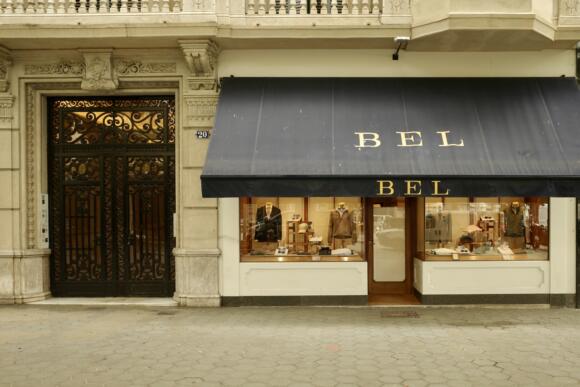
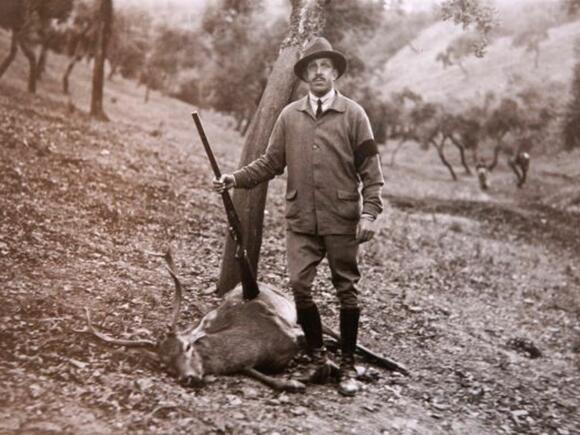
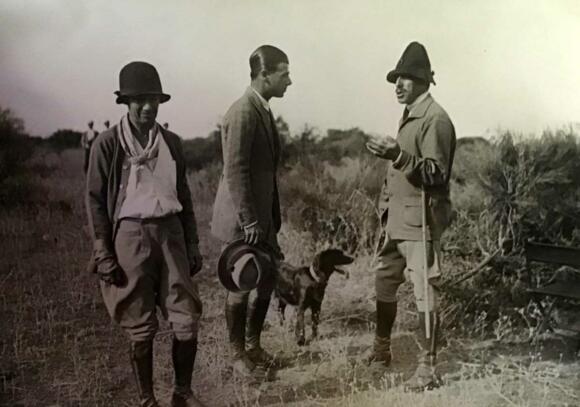
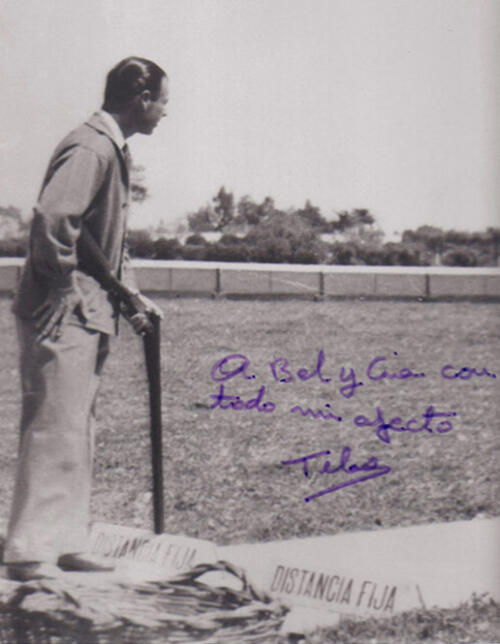
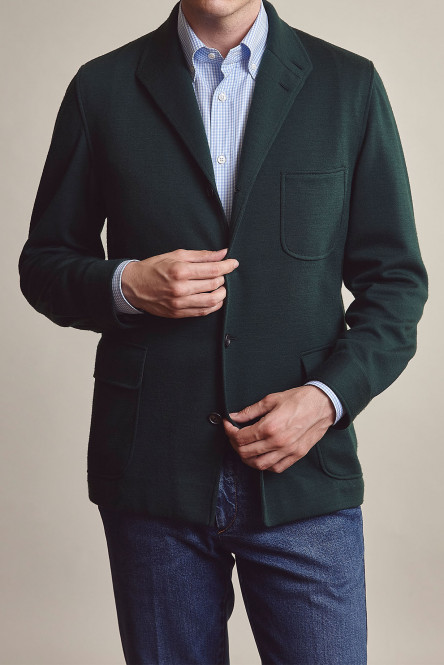
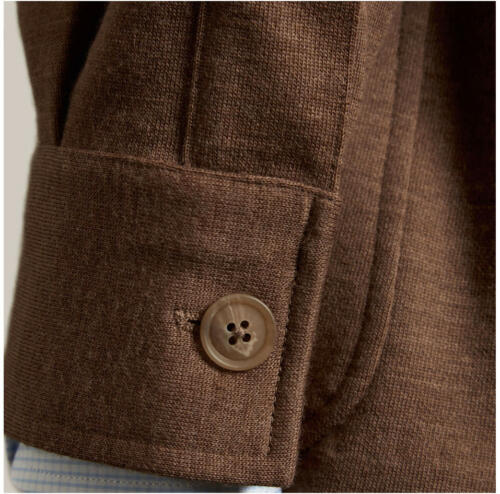
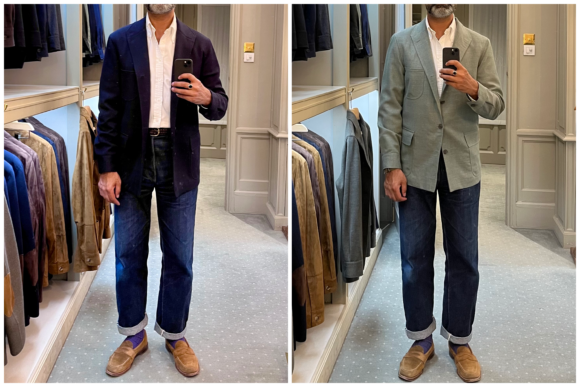
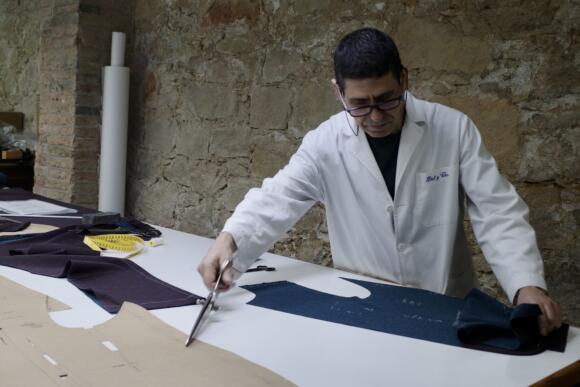
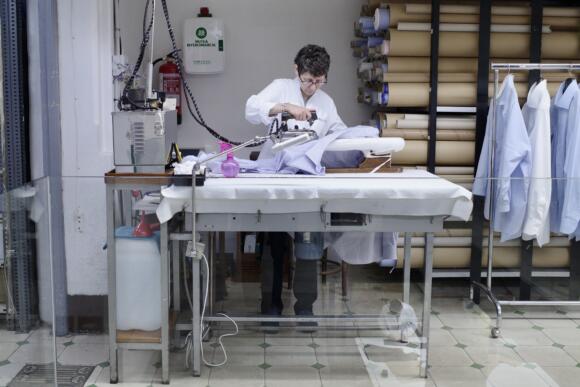
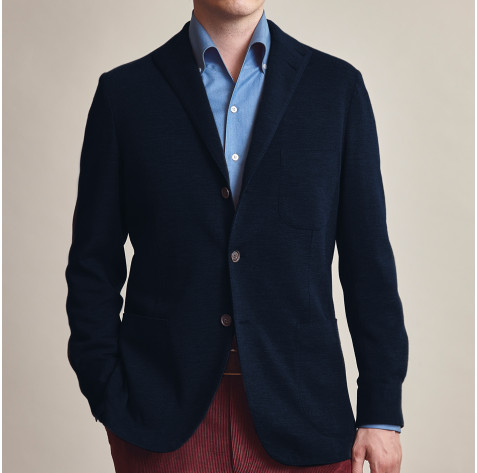
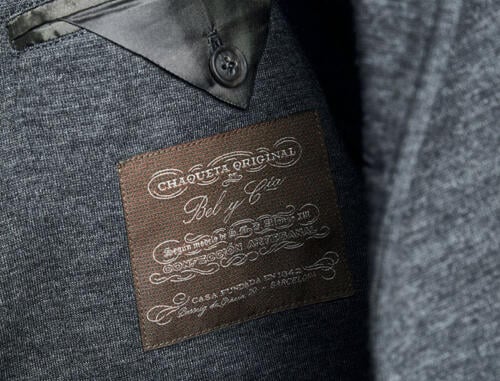
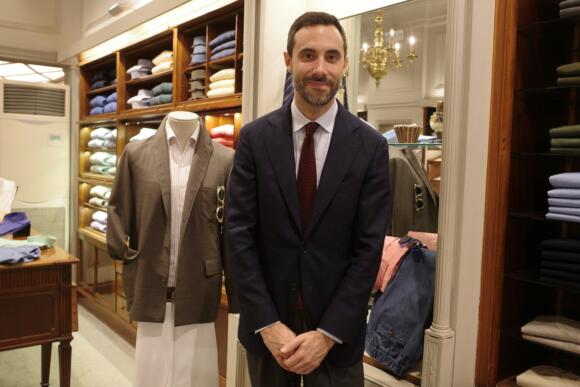
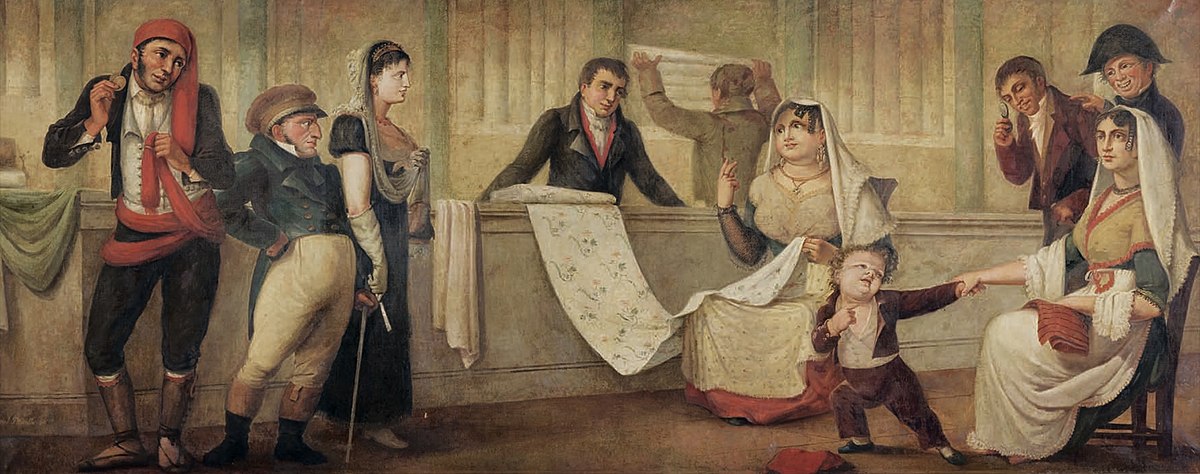
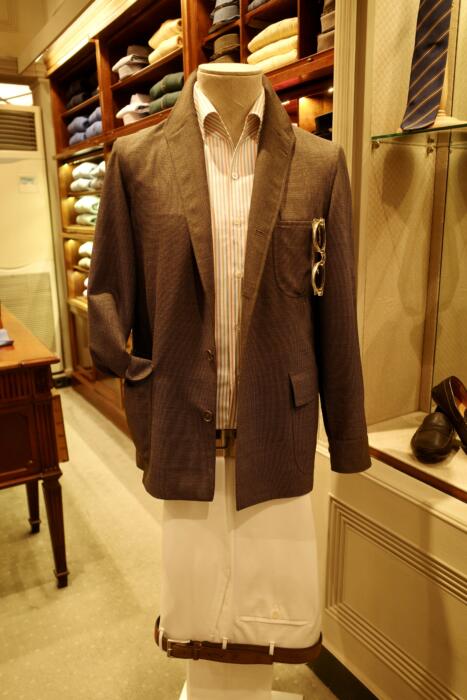


























Do you think feasible to match with plus-fours for shooting, given its origins?
Of course. IIRC Count Teba wore his with plus-twos. The jacket would ideally have an action back for shooting.
Yes have done .
Great article, seems like a lovely shop to visit. How does it compare to Justo Gimeno? Being almost 3/4 times the price what makes it 4 times more expensive?
Hi
Good question!
I think there’s a number of factors at play here:
– Location: Justo Gimeno is in Zaragoza and Bel are in Barcelona. I’ve not had the fortune to visit Zaragoza but this website (https://www.numbeo.com/cost-of-living/compare_cities.jsp?country1=Spain&city1=Barcelona&country2=Spain&city2=Zaragoza+%28Saragossa%29) reckons the Cost of Living including Rent is 28.6% lowers in Zaragoza. That’s not the same as cost of commercial rent, manufacturing costs and cost of staff, but it gives some indication.
– Alterations: The Bel price includes free alterations for most straightforward adjustments. I’m not sure Justo do but I’m sure I’ll be corrected if I’m wrong.
– Cloth: I think Bel’s cloth selections are generally finer and more luxurious. When Justo’s Tebas are made in more expensive cloths the price gap narrows a little. For example, Justo’s Tebas in Fox Brother’s cloth (https://www.themerchantfox.co.uk/products/fox-char-brown-classic-teba-jacket) are about 900 euros which makes the Bel Teba closer to 2x price (obviously still much more expensive but not as high as some of the comparisons of 3x-4x)
– Make: I think the quality of the Bel make is a lot higher, specifically the amount of handwork and the pressing that goes into the garment. I own a Justo Teba and I like it very much but the Bel Teba had more body and shape through the lapels. If I could save up enough euros my next Teba would be from Bel but I do think the Justo option is a good one – especially if you want to try the Teba style for the first time.
I can’t argue that the Bel Teba isn’t an expensive option but I hope this helps give you the information you need to make an informed purchase 😊
Cheers!
Manish
And Gimeno is much more widely available, for example https://en.michaeljondral.com/collections/justo-gimeno
– which is where I obtained mine. I think a factor, is how close-fitting a teba can be cut across the shoulders and upper arm, so perhaps there is a more risk with rtw.
Manish’s day out. He’s having all the fun 🥳
I visited Bel y Cia a few years ago after being stunned by Gaudi’s Casa Batilo and Casa Milo (I dream to have a flat in it) on the Passeig de Gràcia. The shirts are beautiful but, unfortunately, I did not have time to try on Tebas before catching my train back up to Girona.
How would you compare’s Bel’s Tebas with those of Justo Gimeno of Zaragoza. He makes MTO Tebas for Merchant Fox and distributes through Beige Habilleur in Paris. Bel’s Tebas are two to three times more than Gimeno’s, probably due to higher location and other costs, and I wonder if they are worth the extra cost.
I would be also be interested in other Teba recommendations as Oliver Brown has dropped them. They are available in menswear stores throughout Andalucia, especially in Sevilla (Curzon is very cheap) and the Jerez. They are often small stores that don’t have websites. The Armoury’s Hunter II appears to be good value too at $750 too.
I’ll let Manish reply on the other points, but just FYI there’s a piece on the City Hunter here
Hi Gary
Let’s go in on that flat together!
I’ve replied to PMM above on price and hopefully that is helpful but let me know if not!
Cheers
Manish
They’re not. Bel y Cia is a wonderful shop that gives you some of that old world luxury but is ridiculously overpriced at the same time. They have their customer base but you can get most of their stuff for half the money elsewhere. Also Justo Gimeno used to be far cheaper before they were picked up by Fox among other shops. For excellent quality at decent prices look at Lopez Aragorn. Their webshop takes some time to get used to but they’re excellent quality at rather competetive prices. IMO their styles and cuts are better than Justo Gimeno.
Cracking post.
Wonderful to see something new yet with a storied history like this.
Great to see that this firm is still going strong.
That’s what matters!
is it tea-ba? Or perhaps thé-ba?
I think it’s the latter but happy to be corrected
te with an e like hen
ba like the noise a sheep makes, but shorter
stress is on the first syllable – te
actually, make that a like in apple
Very nice piece Manish. Love learning about shops like this and putting them on the list to visit!
Thank you very much, Manish. I always enjoy the level of detail you go into in your articles.
On a related note, I was in Seville for a big bday party recently where the crowd was 50/50 English/Spanish and I have to say the Spaniards have style! The English looked rather sad in comparison, so we have a lot to learn…
Thank you for the article Manish. It’s very interesting and informative. Would consider getting one for the summer in a linen mix and a warmer one for now. The more relaxed look seems to go hand in glove with the shift to more relaxed dressing. I only wish I had known about Bel last year before I was in Barcelona.
Simon-would love to see city guides to Barcelona and Madrid. It seems a shame not to feature a city from Spain.
Thanks Dan, we are trying to do more. Interestingly, the issue is often keeping them up to date – several like London and Florence and very out of date now!
Manish, how would you describe this type of Spanish style? I think we’d have loved to see you dressed as a Spaniard in that awesome white/cream trouser combo above. You’d have really pulled it off… It seems to have some of the relaxed nature of Southern Italian style, and also some of the smartness of Northern Italian style. But I’m really hiding behind generalities. Avoiding the single word answer, ‘yes!’, how would you describe it?
Also, how did you rate their shirts? I have walked past their shop many times, taking photos, with the intention of bringing to Luca in Naples! 😉
Hi Jonny
Great question!
I would call it ‘casual conservative’.
Conservative because whenever I’m in Barcelona and I see a man in a tailored jacket/Teba it is typically a classic navy (even Xavi said the Classic Teba is always in stock in Navy because it’s the most popular). Also, conservative because tailoring is worn in a very consistent silhouette without too many frills.
Casual because Xavi told me there isn’t really a tradition of wearing ties in Spain so most guys have a button or two undone. That’s also one of the reasons why Bel y Cia have quite a few different shirt collars (the one on the mannequin is a one piece collar); it’s a good way of injecting a little personality into a tie-less navy jacket look.
I didn’t have too much time with the shirts but they look good – particularly the bespoke ones which are made on site (the RTW is made in Italy). If it’s any help I’ve had a couple of people message me on Instagram after the article was published telling me the shirts are excellent.
I too would have loved to try that Teba/cream trouser combo! Really lovely!
Thanks again and have a great day!
Thanks, Manish.
It seems that there is something quintessentially Spanish about their style, and I find it hard to put into words- except that it is different from English and Italian style. It’s a haut-bourgeois street style- and is in a city about as bourgeois as Liverpool! 😉 Also, I went in a couple of days after you, and tried on a Teba. They don’t really do it in black- this is surprising bc black is such a predominant tone in Spain; in every street, and in every gallery painting the Spaniards are wearing a lot of black… I understand the reason for not doing it in black it is bc the owner does not like black- although they will do a black Teba, if pushed. So, these are two extraordinary things about the shop. A Spaniard style without black, and a haute-bourgeois Barcelona…
Is there something very second-city about Bel y Cia? Well, PS will have to send you to Madrid so you can report on this- Italy is too regional, England too centralised. I’d recommend the Ritz.
I loved the sunglasses, the Floria shirt collar, and the Tebas. Personally, I don’t feel that Brits look too good in navy- and that we really suit grey… One notices how good the presidents of Russia and France can look in navy, whereas Princes William, and Harry do not- they wear it as a rebellion against ‘the men in grey suits’. I also feel that after a period of Europeanisation, we are fitting into more traditional patterns- this is cultural, and an artistic response, not at all political. So, I wldn’t want a Teba in navy, and the black they offer for bespoke is not an attractive black. I like very much the olive summer Teba…
I’ll probably get some shirts from there. When we use words like ‘bespoke’, one wonders whether we mean the same thing. I wonder if they do buttonholes by hand etc. I’ll go back in and ask… I was just so wowed by their collars, the sunglasses, and how well the ventless Teba fitted…
Hi from BCN- I can see la Sagrada Familia as I sit, and I have my navy cord Sicilian jacket next to me!
We are and were the first to stock Tebas in the U.K. manufactured by Justo Gimeno. Our customers love them and they really are an interestingly different option for smart casual.
TEBA BOUGHT IN SEVILLE THIS SEPTEMBER IN SILK AND CASHMERE MIX BOUGHT BASTED AND WAIST AND SHOULDER FINISHED TO ME COST 450 EUROS.
It might be heresy to say this, but having been lucky enough to spend time in both Spain and Italy over the past few years, I do think the average Spanish man is better dressed than the average Italian man. It’s certainly more uniform but the combinations of navy, cream, brown, taupe and beige really are lovely.
I walked past the store while on vacation in Barcelona last week, not knowing what it was. The windows looked too appealing, I’m glad I looked it up I found the article before I left. Beautiful store, way more choice than what is shown on the website. A suede teba cost me 1980 if anyone is interested, more casual jackets and overshirts in suede were lower than that.
Nice, thank you Stanislav